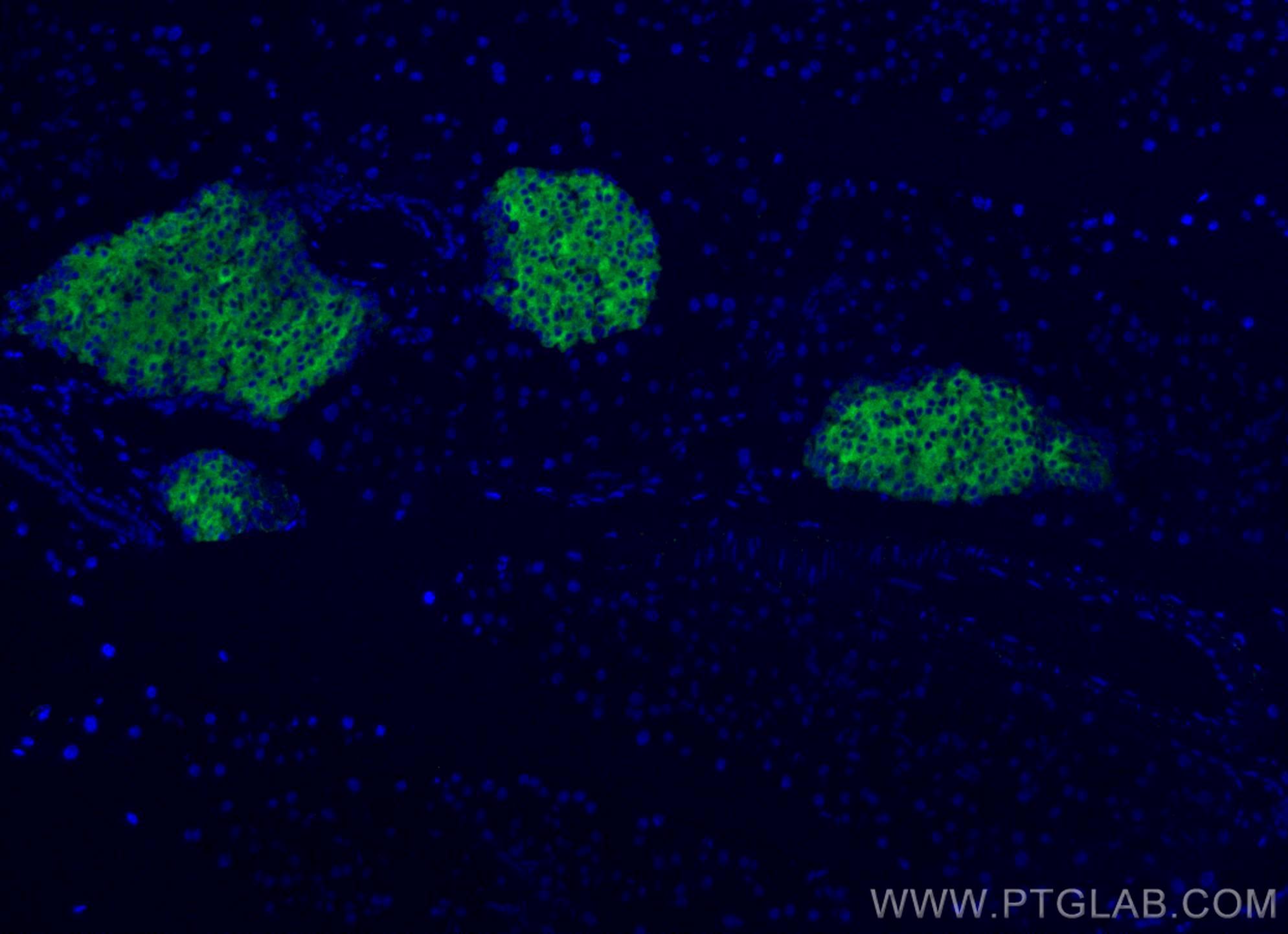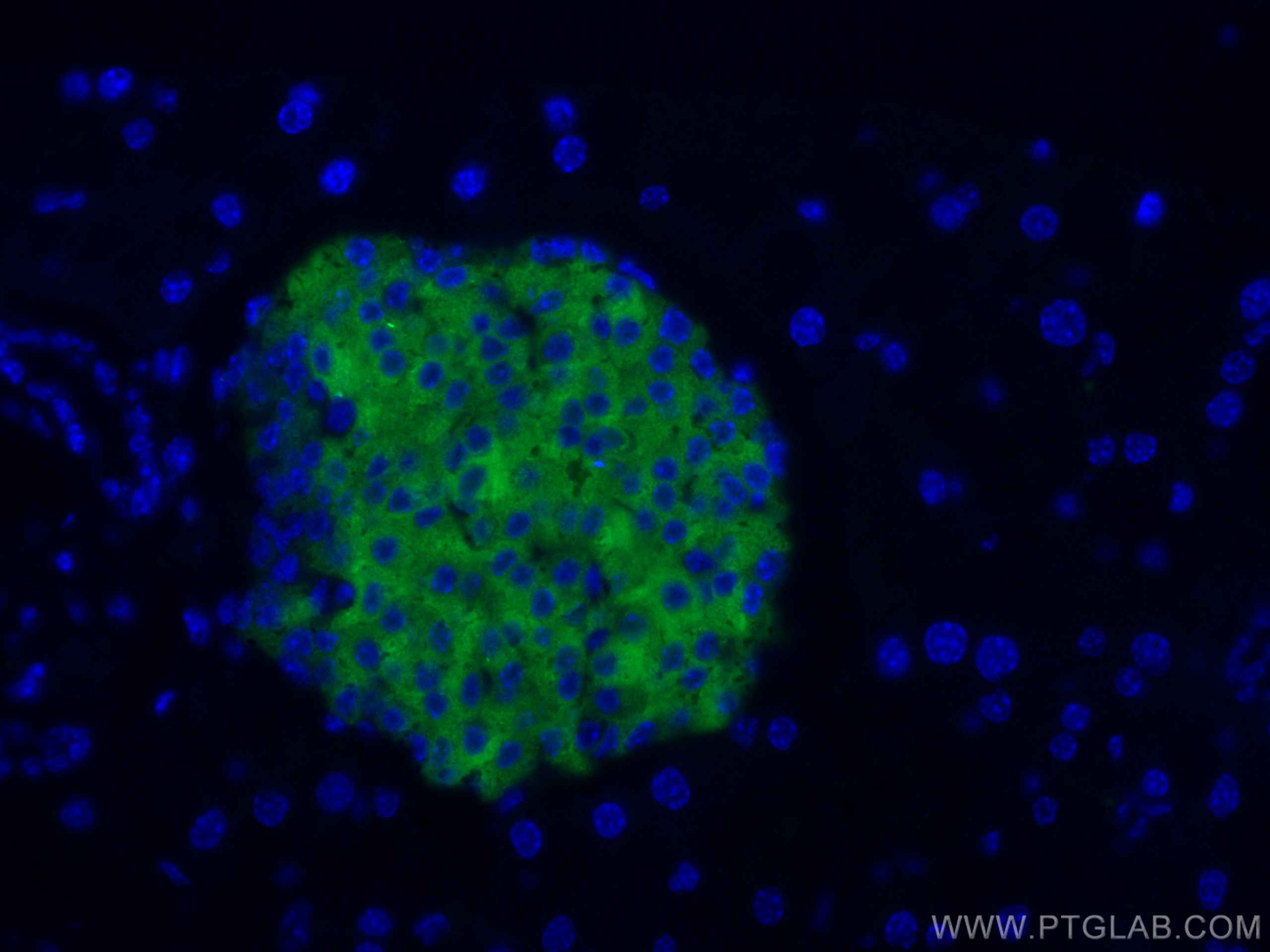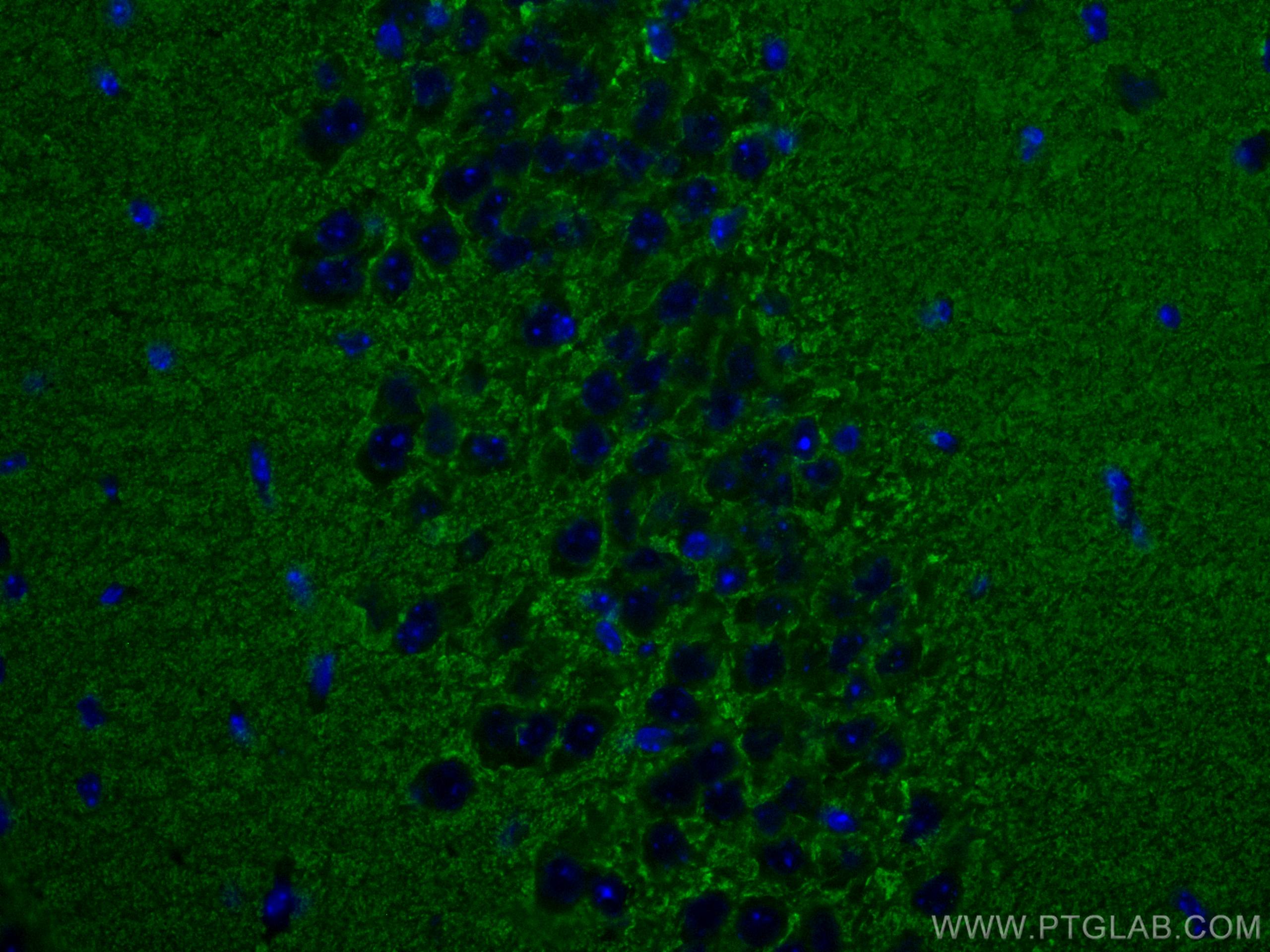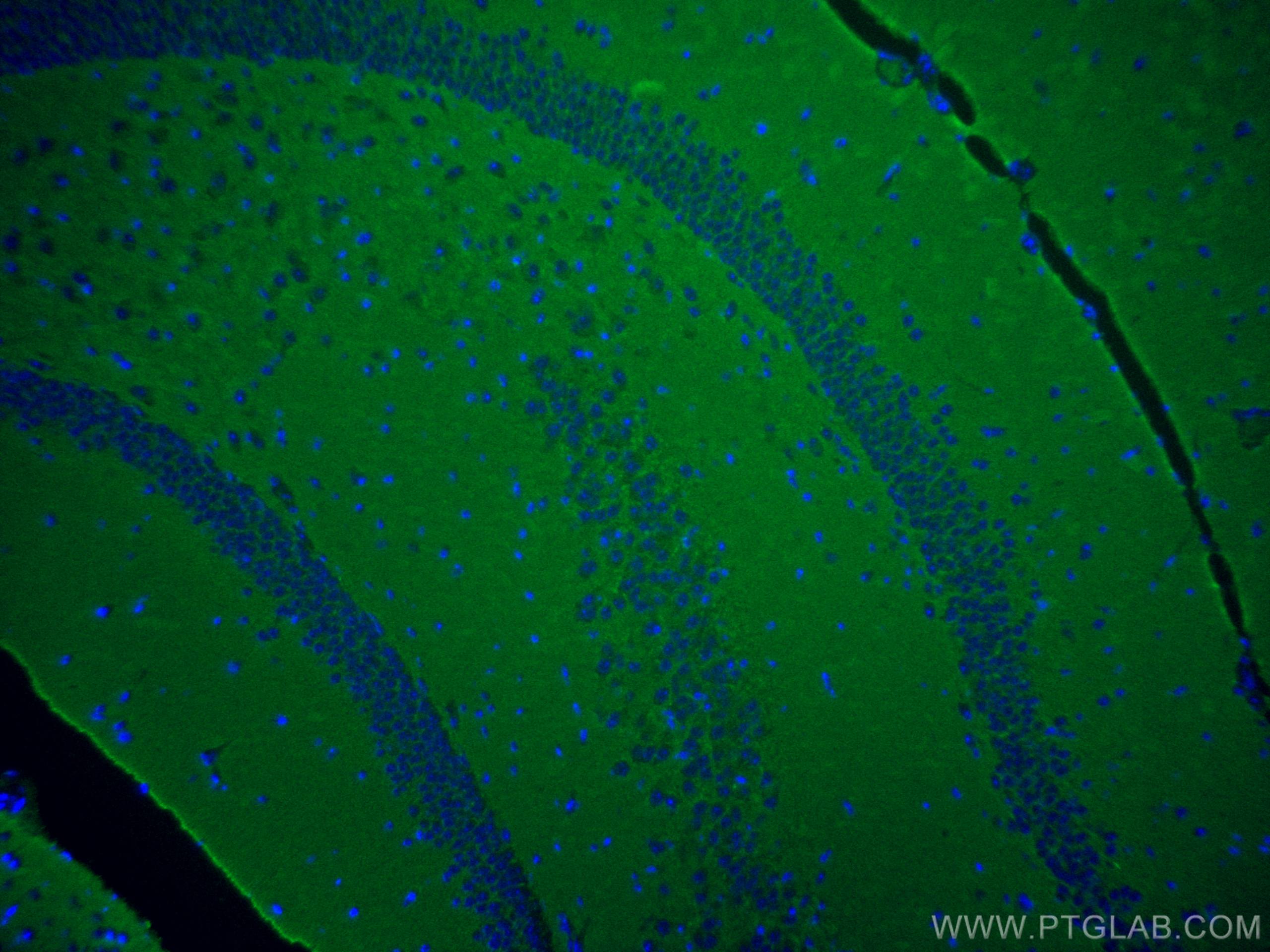Tested Applications
| Positive IF-P detected in | mouse pancreas tissue, mouse brain tissue |
Recommended dilution
| Application | Dilution |
|---|---|
| Immunofluorescence (IF)-P | IF-P : 1:50-1:500 |
| It is recommended that this reagent should be titrated in each testing system to obtain optimal results. | |
| Sample-dependent, Check data in validation data gallery. | |
Product Information
CL488-17785 targets Synaptophysin in IF-P applications and shows reactivity with human, mouse, rat samples.
| Tested Reactivity | human, mouse, rat |
| Host / Isotype | Rabbit / IgG |
| Class | Polyclonal |
| Type | Antibody |
| Immunogen |
CatNo: Ag11781 Product name: Recombinant human Synaptophysin; SYP protein Source: e coli.-derived, PGEX-4T Tag: GST Domain: 50-313 aa of BC064550 Sequence: ELQLSVDCANKTESDLSIEVEFEYPFRLHQVYFDAPTCRGGTTKVFLVGDYSSSAEFFVTVAVFAFLYSMGALATYIFLQNKYRENNKGPMLDFLATAVFAFMWLVSSSAWAKGLSDVKMATDPENIIKEMPVCRQTGNTCKELRDLVTSGLNTSVVFGFLNLVLWVGNLWFVFKETGWAAPFLRAPPGAPEKQPAPGDAYGDAGYGQGPGGYGPQDSYGPQGGYQPDYGQPAGSGGSGYGPQGDYGQQGYGPQGAPTSFSNQM Predict reactive species |
| Full Name | synaptophysin |
| Calculated Molecular Weight | 313 aa, 34 kDa |
| Observed Molecular Weight | 38-40 kDa |
| GenBank Accession Number | BC064550 |
| Gene Symbol | Synaptophysin |
| Gene ID (NCBI) | 6855 |
| RRID | AB_2919155 |
| Conjugate | CoraLite® Plus 488 Fluorescent Dye |
| Excitation/Emission Maxima Wavelengths | 493 nm / 522 nm |
| Form | Liquid |
| Purification Method | Antigen affinity purification |
| UNIPROT ID | P08247 |
| Storage Buffer | PBS with 50% glycerol, 0.05% Proclin300, 0.5% BSA, pH 7.3. |
| Storage Conditions | Store at -20°C. Avoid exposure to light. Stable for one year after shipment. Aliquoting is unnecessary for -20oC storage. |
Background Information
Synaptophysin (SYP, also known as major synaptic vesicle protein p38) is a 38-kDa integral membrane glycoprotein that regulates synaptic vesicle endocytosis. It is the most abundant synaptic vesicle protein by mass. Synaptophysin is present in neuroendocrine cells and neurons that participate in synaptic transmission. Synaptophysin is a useful marker for identification of neuroendocrine cells and neoplasms. (PMID: 3010302; 21658579)
Protocols
| Product Specific Protocols | |
|---|---|
| IF protocol for CL Plus 488 Synaptophysin antibody CL488-17785 | Download protocol |
| Standard Protocols | |
|---|---|
| Click here to view our Standard Protocols |










